Renaat Declerck, Susan Reed, Bert Cappelle9783110185898, 311018589X
The book aims to provide a grammar of tense which can be used both as an advanced reference grammar (for example by MA-level or postgraduate students of English or linguistics) and as a scientific study which can act as a basis for and stimulus to further research. It provides not only a wealth of data but also a unique framework for the study of the English tense system, which achieves great predictive and explanatory power on the basis of a limited number of relatively simple rules.
The framework provided allows for an analysis of the semantics of individual tenses which reflects the role of tenses not only in locating situations in time relative to speech time but also in relating situations in time relative to one another to form temporally coherent discourse. Attention is paid to the relations between tenses. On the one hand, we can identify sets of tenses linked to particular temporal areas such as the past or the future. These sets of tenses provide for the expression of a system of temporal relations in a stretch of discourse in which all the situations are located within the same temporal area. On the other hand, there are many contexts in which speakers might in theory choose between two or more tenses to locate a situation (e.g., when we choose between the past tense and the present perfect to locate a situation before speech time), and the book examines the difference that a choice of one or the other tense may make within a discourse context.
The book moves from a detailed exploration of the meaning and use of individual tenses to a thorough analysis of the way in which tenses can be seen to function together as sets, and finally to a detailed examination of tenses in, and tenses interacting with, temporal adverbials.
Original data is used frequently throughout the book to illustrate the theory discussed.
Table of contents :
Title Page……Page 3
ISBN 311018589X……Page 4
Acknowledgements……Page 5
Table of contents……Page 7
1. Introduction……Page 9
1.1 Aims and scope of the work……Page 12
1.2 Symbols and conventions……Page 13
1.3 The illustrative material……Page 14
1.4 The structure of the book……Page 16
1.6 Phrase……Page 20
1.8 Sentence……Page 21
1.10 Tensed vs nontensed verb forms……Page 23
1.11 ‘Present’ and ‘perfect’ nonfinite forms……Page 25
1.12 Lexical verbs vs auxiliaries……Page 26
1.13 Transitive vs intransitive lexical verbs……Page 28
1.14 Introduction……Page 30
1.16 The formation of the past tense……Page 31
1.17 The formation of the other tenses……Page 32
1.18 The meanings of tenses: expressing temporal relations……Page 33
1.19 Special uses of tenses……Page 35
1.20 Introduction……Page 36
1.21 Perfective aspect……Page 38
1.22 Imperfective aspect……Page 39
1.23 Habitual aspect……Page 42
1.24 Repetitive vs semelfactive aspect……Page 43
1.26 Perfect aspect?……Page 45
1.27 Definition of mood and modality……Page 46
1.29 Situation: meaning (denotation) versus reference……Page 48
1.30 Terminological conventions for speaking about……Page 50
1.31 Terminology used to refer to situation types and……Page 53
1.32 Situation types……Page 55
1.33 Introduction……Page 57
1.34 Ontological feature 1: ‘static’ versus ‘dynamic’……Page 59
1.35 Ontological feature 2: ‘agentive’ versus ‘nonagentive’……Page 61
1.36 Ontological feature 3: ‘homogeneous’ versus……Page 63
1.37 Ontological feature 4: ‘durative’ vs ‘punctual’……Page 65
1.38 Ontological feature 5: [( transitional]……Page 67
1.39 Ontological feature 6: ‘telic’ vs ‘atelic’……Page 68
1.40 Ontological feature 7: [( evolving]……Page 73
1.42 Classification 1: states, actions, events and processes……Page 74
1.43 Classification 2: Vendler’s taxonomy……Page 78
1.44 Definition of (non)bounded situations/clauses……Page 80
1.45 ‘Nonbounded actualization’……Page 82
1.46 (Non)boundedness and duration adverbials……Page 83
1.47 (Non)boundedness vs (a)telicity……Page 85
1.48 (Un)bounding clause constituents……Page 87
1.49 Aspectual interpretation……Page 89
1.51 Part III……Page 91
1.52 Part IV……Page 92
1.53 Part V……Page 93
1.54 Part VI……Page 95
1.56 Part VIII……Page 96
2. Towards a theory of tense and time……Page 99
I. Introduction……Page 101
2.1 Tense vs time……Page 102
2.3 Tenses……Page 103
2.4 Temporal zero-point (t0)……Page 105
2.5 Nonfinite clauses are tenseless……Page 106
2.6 Progressive tenses?……Page 107
2.7 Theoretical discussion: does English have more……Page 108
2.8 Does English have a ‘future tense’?……Page 110
2.9 Future tense forms vs ‘futurish’ tense forms……Page 114
2.10 Does English have a present perfect tense?……Page 116
2.11 More on the notion of temporal zero-point (t0)……Page 118
2.12 Full situation vs predicated situation……Page 121
2.13 Time of the predicated situation vs time of the full……Page 124
2.14 Orientation time……Page 125
2.15 The semantics of tenses: temporal domains……Page 127
2.16 Kinds of temporal relations……Page 129
2.17 Expanding a temporal domain: expressing T-relations……Page 131
2.18 Temporal relations that are not linguistically……Page 133
2.19 Modal uses of tenses……Page 136
2.20 Shifts of temporal perspective……Page 137
2.21 Universal sentences……Page 138
2.22 Definition and basic classification of ‘temporal……Page 140
2.23 The function of a time-specifying adverbial……Page 142
2.24 Situation-time adverbial……Page 144
2.27 The relation between one Adv-time and another……Page 145
2.28 Durative time-specifying adverbials referring to the……Page 146
2.29 Adv-time-simultaneity……Page 147
2.30 Punctual Adv-times and durative bounded situations……Page 148
2.31 The role of pure duration adverbials……Page 150
2.32 Summary of section III……Page 152
2.33 The conceptualization of ‘time-spheres’……Page 155
2.35 Present time-sphere zones……Page 156
2.37 Absolute zones……Page 157
2.38 Past vs pre-present……Page 158
2.39 The length of the time-spheres and zones……Page 159
2.40 Present time-sphere tenses vs past time-sphere tenses……Page 160
2.42 Temporal domain……Page 161
2.44 Absolute and relative past tenses……Page 163
2.47 Absolute-relative tenses……Page 164
2.49 Temporal subordination or (temporal) binding……Page 165
2.51 The basic terminology of tense……Page 169
2.52 What counts as a tense?……Page 170
2.54 What is (and is not) expressed by tenses……Page 172
2.55 Special uses of tenses……Page 174
2.56 Types of temporal adverbials……Page 175
2.57 The conceptualization of time that tenses encode……Page 176
2.58 Establishing and expanding temporal domains……Page 177
3. The absolute use of the present tense……Page 179
3.1 The present tense establishing a present domain……Page 181
3.3 The historic present……Page 184
3.4 The present tense expressing combined past and……Page 186
3.5 The present tense as unmarked tense……Page 187
3.6 Pre-present situations represented as if present……Page 188
3.8 The nonprogressive present referring to a……Page 189
3.9 The progressive present referring to an arranged……Page 191
3.10 Constraints on the use of the present tense with……Page 192
3.11 The present tense substituting for a……Page 196
III. Summary……Page 198
4. The absolute past tense……Page 201
4.1 The semantics of the absolute past tense……Page 203
4.2 Bygone situations: ‘W-bygone’ vs ‘T-bygone’……Page 204
4.3 The implicature of discontinuation……Page 205
4.4 The nonprogressive past vs the progressive past……Page 207
4.5 Concern with THEN is clear from the context……Page 208
4.6 The past tense used to focus on the ‘when?’ of the……Page 209
4.7 The past tense used for ‘actualization focus’……Page 212
4.8 The past tense contrasting what is W-bygone with……Page 214
III. Summary……Page 215
5. The absolute use of the present perfect……Page 217
5.1 Introduction……Page 220
5.2 The semantics and the T-interpretations of the……Page 222
5.3 Introduction……Page 226
5.4 The three W-interpretations of clauses in the……Page 230
5.5 Further arguments for distinguishing between three……Page 237
5.6 Summary of the meaning(s) and W-readings of the……Page 241
5.7 The ‘factual full situation’ vs the ‘potential full……Page 243
5.8 Conditions for the continuative W-interpretation……Page 244
5.9 Factors triggering a continuative interpretation……Page 246
5.10 Further remarks on the indefinite reading……Page 249
5.11 The indefinite reading and temporal adverbials……Page 250
5.13 The ‘experiential perfect’ use of the indefinite perfect……Page 253
5.14 The indefinite perfect used to express ‘hot news’……Page 255
5.15 The resultative reading of the indefinite……Page 256
5.16 The ‘recency reading’ of the indefinite present perfect……Page 257
5.17 Functional types of up-to-now reading……Page 259
5.18 The unmarked up-to-now reading……Page 260
5.19 The constitution readings……Page 263
5.20 The specificational function of the constitution reading……Page 267
5.21 Two-clause specificational sentences combining two……Page 271
5.22 Summary of part V……Page 277
5.24 (Non)progressive aspect and a continuative habitual……Page 279
5.25 The indefinite reading and (non)progressive aspect……Page 281
5.26 The unmarked up-to-now reading and……Page 285
5.27 The nonquantificational constitution reading and……Page 287
5.28 The duration-quantifying constitution reading and……Page 290
5.29 The number-quantifying constitution reading and……Page 291
5.30 The indefinite reading versus the continuative……Page 295
5.31 The up-to-now reading versus the continuative……Page 297
5.32 The up-to-now reading versus the indefinite……Page 299
5.34 Reference to entities that no longer exist……Page 303
5.35 Verb of creation……Page 306
5.37 The present perfect and the idea of present result……Page 309
X. Summary……Page 316
6. The present perfect vs the preterite……Page 323
6.1 Introduction……Page 325
6.2 Actualization focus……Page 327
6.3 The influence of definite noun phrases……Page 328
6.4 The present perfect vs the preterite in wh-questions……Page 330
6.5 The present perfect vs the preterite in when-questions……Page 334
6.6 Summary……Page 338
7. Absolute tense forms referring to……Page 343
7.1 Definition of ‘future tense’……Page 345
7.3 ‘Futurish’ tense forms……Page 346
7.5 The distribution of shall and will in the future tense……Page 348
7.6 The various meanings of shall and will……Page 349
7.7 The progressive future tense (without progressive……Page 352
7.8 ‘Be going to……Page 353
7.10 Be going to expressing a present intention……Page 354
7.11 Be going to expressing present predictability of a……Page 358
7.13 Constraints on the use of be going to……Page 360
7.15 The auxiliary be to……Page 364
7.16 The present tense……Page 365
IV. Summary……Page 366
8. Temporal domains and relative tenses:……Page 369
8.1 Full situation vs predicated situation……Page 372
8.2 Orientation time & situation time……Page 375
8.3 Temporal relations expressed by tenses: T-relations……Page 376
8.4 Temporal relations not expressed by tenses:……Page 377
8.6 Present time-sphere zones……Page 378
8.8 Absolute zones……Page 379
8.11 Temporal domain……Page 380
8.12 Two past tenses: the absolute preterite vs the……Page 381
8.14 Temporal subordination or temporal binding……Page 382
8.15 Central time of orientation (central orientation time)……Page 384
8.17 The definition of T-simultaneity……Page 385
8.18 The definition of W-simultaneity……Page 386
8.20 Definition of ‘head clause’ and ‘matrix’……Page 388
8.21 Shift of domain……Page 389
8.22 Shift of temporal perspective……Page 390
III. Arguments for distinguishing between the absolute and the relative past tense……Page 391
8.23 Argument 1: similarity between past and……Page 392
8.24 Argument 2: past tenses whose situation time is……Page 393
8.25 Argument 3: tense use in represented speech……Page 398
8.26 Argument 4: the incompatibility of a……Page 406
8.27 Argument 5: a relative past tense form cannot be……Page 410
8.28 Argument 6: the use of the preterite rather than the……Page 413
8.29 Argument 7: ambiguity or vagueness?……Page 416
8.30 Argument 8: choosing between the progressive and……Page 420
8.31 Argument 9: T-simultaneity is a unidirectional……Page 422
8.32 Argument 10: the Dutch test……Page 424
8.33 Theoretical conclusion 1……Page 427
8.34 Theoretical conclusion 2……Page 428
8.35 Theoretical conclusion 3……Page 429
8.36 Theoretical conclusion 4……Page 430
8.37 Theoretical conclusion 5……Page 432
8.38 Theoretical conclusion 6……Page 433
8.39 Theoretical conclusion 7……Page 434
8.41 The ‘Principle of Unmarked Temporal Interpretation’……Page 435
8.42 Terminology……Page 442
8.43 Evidence for the existence of two past tenses……Page 443
8.44 Further theoretical conclusions……Page 445
8.45 The role of (non)boundedness in the unmarked……Page 446
9. Temporal subordination in the……Page 449
9.1 The past perfect……Page 452
9.2 Further remarks……Page 454
9.3 The relative past tense……Page 456
9.4 Theoretical remark……Page 457
9.5 The conditional tense……Page 458
9.6 The past versions of futurish forms……Page 459
9.7 The conditional perfect tense……Page 465
9.8 The relevance of the W-interpretation of the……Page 467
9.9 T-relations in a domain established by an……Page 468
9.10 T-relations on an up-to-now reading of the head clause……Page 482
9.11 Shifting the domain after a continuative perfect……Page 486
9.12 Temporal subordination after a continuative perfect……Page 491
9.13 Pre-present domains and use of tenses: summary……Page 492
9.14 Head clauses referring to a nonrepetitive present……Page 493
9.15 Head clauses referring to a present repetitive……Page 495
9.17 Expanding a post-present domain……Page 496
9.18 The past tense expressing T-anteriority in a……Page 499
9.19 The present perfect expressing T-anteriority in a……Page 501
9.20 Coincidence with the central orientation time of a……Page 502
9.21 T-simultaneity with an orientation time coinciding……Page 506
9.22 T-posteriority in a post-present domain……Page 507
9.23 The theoretical status of pseudo-absolute tense forms……Page 509
9.24 Subdomains and recursivity……Page 510
9.25 Relating a situation time to the situation time of a……Page 511
9.26 Observation 1……Page 513
9.27 Observation 2……Page 515
9.28 Definitions……Page 524
9.29 The distribution of direct and indirect binding……Page 528
9.30 The expression of T-relations in a past domain……Page 531
9.31 The expression of T-relations in a pre-present……Page 532
9.32 The expression of T-relations to a present……Page 533
9.33 The expression of T-relations in a post-present……Page 534
9.34 Direct and indirect binding……Page 535
10. Two tense systems with……Page 537
10.1 The Absolute Future System……Page 539
10.2 The Pseudo-t0-System……Page 541
10.3 Outline of the distribution of the two systems……Page 543
10.4 Characteristics of the two systems……Page 545
10.5 Summary of part II……Page 555
10.6 Subclauses that allow either system……Page 556
10.7 Subclauses which as a rule use the Pseudo-t0-System……Page 567
10.8 Subclauses which cannot use the Pseudo-t0-System……Page 574
IV. Further remarks……Page 576
V. Summary……Page 578
11. Tense choice determined by……Page 579
11.1 Definition of ‘temporal focus’……Page 581
11.2 The unmarked or marked choice of temporal focus……Page 584
11.3 The manipulation of temporal focus for a specific……Page 589
11.4 Summary……Page 593
12. Preterite vs present perfect in……Page 597
12.1 Deictic vs nondeictic time-specifying adverbials……Page 599
12.2 Single-zone adverbials, multi-zone adverbials and……Page 601
12.3 Homogeneous vs heterogeneous time-specifying……Page 602
12.4 (Non)inclusive heterogeneous time-specifying……Page 603
12.5 Nondeictic adverbials……Page 604
12.6 Past-zone adverbials……Page 606
12.7 Noninclusive heterogeneous pre-present-zone adverbials……Page 607
12.8 Noninclusive homogeneous pre-present-zone adverbials……Page 609
12.9 Inclusive pre-present-zone adverbials……Page 610
12.10 Multi-zone time-specifying adverbials……Page 611
12.11 Since-adverbials……Page 613
12.12 For-adverbials……Page 619
12.13 Until-adverbials……Page 624
12.14 Before-adverbials……Page 627
12.15 The present perfect with adverbials referring to……Page 628
12.16 Tense choice with actualization adverbials……Page 630
12.17 Tense choice with adverbials indicating a recent……Page 631
12.18 Tense choice with once……Page 634
12.20 Tense choice with temporal adverbials……Page 637
13. Adverbial when-clauses and the……Page 643
13.1 Delineation of the subject……Page 645
13.2 When-clauses as situation-time adverbials or as……Page 646
13.3 When-clauses and temporal structure……Page 649
13.4 Combining when-clauses with other time-specifying……Page 658
13.5 The relation between the situation time of the head……Page 659
13.6 The definition of ‘simultaneity’ and ‘situation time’……Page 662
13.7 Possible combinations of tenses in head clause and……Page 663
13.8 Further remarks on the configurations……Page 665
13.10 The use of indirect binding in when-clauses……Page 668
13.11 Definition of pseudo-sloppy simultaneity……Page 675
13.12 Further remarks on pseudo-sloppy simultaneity……Page 676
13.13 Counterfactual when-clauses……Page 681
13.14 Tentative when-clauses……Page 682
13.16 When-clauses in the future tense……Page 683
13.17 Habitual-repetitive sentences……Page 684
13.18 Head clause referring to the past and when-clause……Page 688
13.20 Head clause referring to the pre-present and……Page 689
IX. Summary……Page 691
14. Adverbial before-clauses and……Page 693
14.2 The temporal structure of before……Page 695
14.3 Temporal structures involving a head clause and a……Page 696
14.4 The nature of past tense forms in before-clauses……Page 700
14.5 Absolute tense forms in both before-clause and……Page 707
14.6 Absolute tense in the head clause and relative tense……Page 715
14.7 Relative tense in head clause and relative tense in……Page 725
14.8 Relative tense in head clause and absolute tense in……Page 729
14.9 Summary of section B……Page 733
14.10 Using a before-clause as orientation-time adverbial……Page 735
14.11 Factual interpretations of before-clauses……Page 737
14.12 Counterfactual before-clauses……Page 743
14.13 Not-yet-factual before-clauses……Page 744
14.14 The semantics of the conjunction until……Page 746
14.15 The tenses used in head clause and until-clause……Page 747
14.16 The semantics of not … until……Page 748
14.17 The temporal structure of after……Page 750
14.18 Temporal structures involving a head clause and an……Page 753
14.19 The tense system if the after-clause functions as……Page 755
14.20 The tense system if the after-clause functions as……Page 758
14.21 Summary of the discussion of before-clauses……Page 762
14.22 Summary of the discussion of after-clauses……Page 764
Glossary……Page 767
References……Page 839
A……Page 841
C……Page 842
E……Page 843
H……Page 844
I……Page 845
N……Page 846
P……Page 847
R……Page 850
S……Page 851
T……Page 852
W……Page 853
Z……Page 854
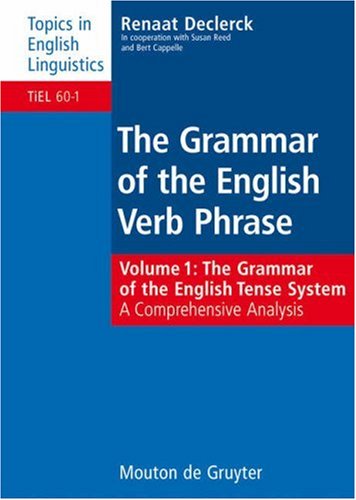
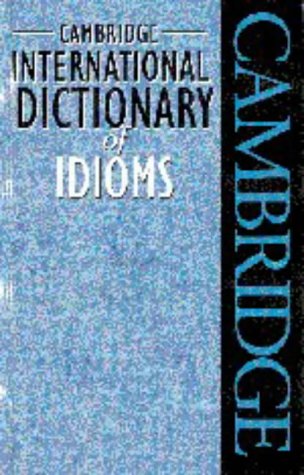
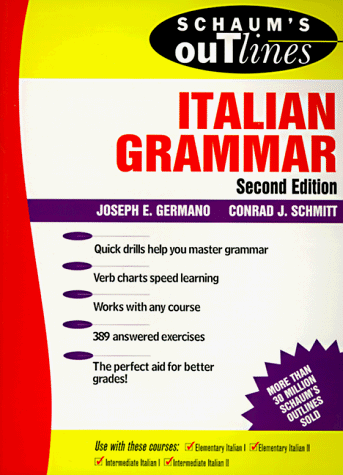
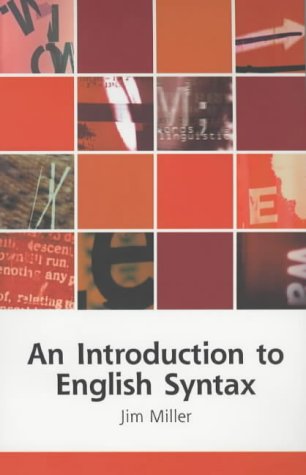

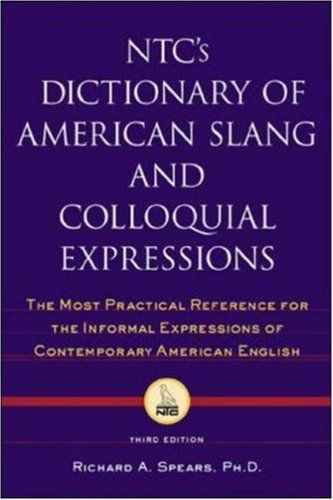
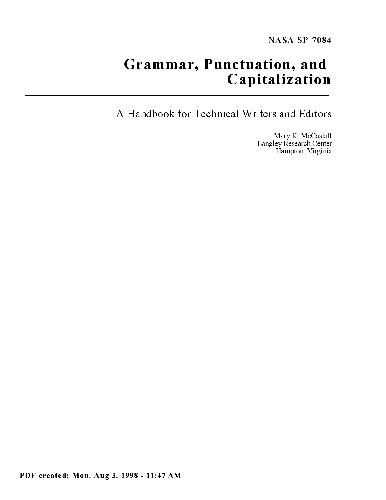
Reviews
There are no reviews yet.